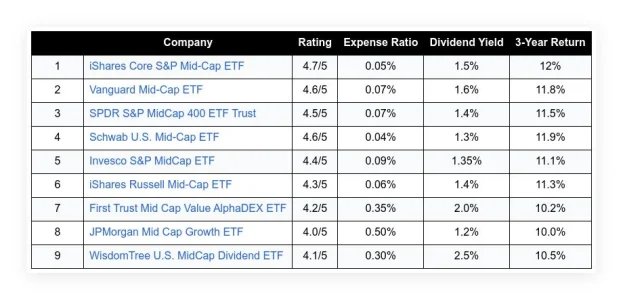Reaching millionaire status in retirement is a dream for many. However, in reality, a Boston College Center for Retirement Research study reveals that 50% of Americans cannot afford their lifestyle in retirement.
Does that mean you can’t achieve your goal of reaching a millionaire status in retirement? Not exactly.
In the words of Francis of Assisi, “Start by doing what’s necessary; then do what’s possible; and suddenly you are doing the impossible.” When it comes to retirement planning, though, it requires careful planning and disciplined execution.
In order to help you along the way, this guide provides you with the knowledge and strategies you need for a successful and satisfying retirement.
Table of Contents
ToggleUnderstanding the Millionaire Benchmark
The definition of a “millionaire” varies based on factors such as desired lifestyles, locations, and healthcare needs.
According to general estimates, a retirement nest egg of $2 million to $4 million might be required to cover living expenses comfortably without relying on Social Security. However, according to a 2023 study from Charles Schwab, the average worker expects to need $1.8 million to retire comfortably.
It stands to reason that saving $1 million can be a very realistic goal, if not a necessity, for many people.
Factors Influencing Your Retirement Savings Needs
A number of factors determine how much you will have to save for retirement:
- Desired retirement age. Since you will need to stretch your savings over a more extended period, retiring early requires a larger nest egg.
- Life expectancy. In order to ensure your retirement savings last throughout your retirement — consider your family history and potential health risks.
- Inflation. Over time, inflation erodes your money’s purchasing power. If you are calculating your retirement expenses in the future, be sure to take inflation into account.
- Healthcare costs. It is common for healthcare costs to increase significantly in retirement. Don’t forget to plan for medical expenses like long-term care.
- Desired lifestyle. You must estimate your ongoing expenses, including travel, hobbies, and discretionary spending after retiring.
Crafting Your Millionaire Retirement Plan
Want to retire as a millionaire? The essential steps to saving for your millionaire retirement are outlined below.
Get started saving as soon as possible.
This can’t be stressed enough. Start investing as early as you can if you want your money to work harder for you.
But let’s step back for a moment. According to retirement experts, 15 percent of your gross income should be invested for retirement. However, that’s just a starting point.
If you increase your contributions as your income grows, imagine how much your nest egg would grow. If you threw more money into these accounts earlier, you could retire a millionaire much faster.
In other words, as money accumulates, it compounds, and the more you have, the more you earn. Here are two scenarios that demonstrate how time can make you a millionaire:
- At 22, you start investing $10,000 annually and earn 10 percent per year. By retiring at 62, you will have saved $400,000. But if compounded, that amount would have reached over $4.4 million.
- Suppose you wait until you’re 32 and invest $10,000 annually with a 10 percent return. Assuming no taxes, if you retire at 62 you will have saved $300,000 over those 30 years, which will compound to over $1.6 million.
For just ten years of waiting, that’s a significant difference.
However, investing is not a good idea if you are still in debt. A person can never truly build wealth if they still owe money to others. Your retirement savings can begin when you have an emergency fund in place and are debt-free (other than your mortgage).
Evaluate the current state of your finances.
The next step is to assess your own financial situation. Here are some tips for getting started, although there is no right or wrong way to do this:
Gather your information.
- Calculate your net worth. Take stock of your assets (what you own) and liabilities (what you owe). Calculate your net worth by subtracting your liabilities from your assets.
- Track your income and expenses. Keep a record of all your income sources and expenses for a month or two. Your money’s origins and destinations will be revealed this way.
Analyze your data.
- Your debt-to-income ratio. Divide your gross monthly income by your total monthly debt payments (excluding your mortgage). In general, a ratio below 36% is considered healthy.
- Determine your current retirement savings. Assess your existing retirement plans, such as your 401(k)s, IRAs, and any employer-sponsored plans. When it comes to financial stability, aim for higher savings rates.
- Estimate your retirement income. Social Security benefits, pensions, and rental properties are potential sources of income.
- Review your budget. Make a comparison between your income and expenses. Do you spend more than you earn? Look for areas that could be cut back on.
Identify areas of improvement.
- Reduce your debt. Focus on creating a plan to pay off debt with a high-interest rate. Consider debt consolidation or the debt avalanche method.
- Increase your savings. Set saving goals, such as emergency fund, retirement, and short-term goals. Whenever possible, automate your savings contributions.
- Boost your income. Take steps to increase your income, such as developing side hustles, negotiating raises, or applying for higher-paying jobs.
- Cut unnecessary expenses. Don’t spend too much on subscriptions or dining out. Review your expenses and reduce non-essentials.
Know your retirement number.
How much is enough to save for retirement? You won’t find an exact answer, but crunching a few numbers may give you an idea. Here are a few guidelines to help you plan for retirement.
- 25x rule. Calculate your retirement income by multiplying it by 25. For example, if you think you’ll need $80,000 per year, you should save $2 million.
- 4% rule. Generally, this formula calculates a retirement fund for a person who will live for 30 years or more. For instance, the amount of money you withdraw each year from your retirement savings could be $72,000 if you have $1.8 million saved.
- 80% of current income. A good rule of thumb is to keep your standard of living at this level. In retirement, you should aim for at least $80,000 of income (in today’s dollars) if you earn $100,000 per year.
- Fidelity’s guidelines. Save at least three times your salary by 30, six times by 50, eight times by 60, and ten times by 67.
It’s also recommended that you overestimate the amount by our friend, Jeff Rose of Good Financial Cents.
“With more time in retirement, too many factors could impact their day-to-day needs,” he said. Market fluctuations, inflation, and medical issues are a few of these factors.
As a result, he suggests adding 25% to whichever “retirement number” you aim for. He suggests that instead of saving $2 million based on the 4% rule, clients should save $2.5 million. Someone who retires before 45 may want to aim even higher. As an example, strive to save 30% to 50% more than you think you need to.
Utilize the 401(k) match offered by your company.
It’s just as essential to pick the correct retirement account as it is to invest enough. It’s like choosing between a labrador retriever or a coyote as your next family pet. While the first move is smart, the second one is dangerous.
Don’t miss out on a company match if you have a 401(k) or 403(b) through your employer. About 62% of workers see matching company 401(k) plans as important to achieving retirement goals.
“Given most employers view 401(k) matches as part of total compensation, it is important that employees don’t leave this money on the table without at least contributing enough to get the match,” said Sri Reddy, senior vice president of retirement and income solutions at Principal Financial Group.
Put a Roth IRA in your portfolio.
Although 401(k)s are great places to start, they may not suffice on their own. Thankfully, the Roth IRA is the perfect solution to this problem.
The best thing about an IRA is that you get to grow your money tax-free. In other words, you get to keep all your money when you retire — instead of handing some to Uncle Sam.
A Roth IRA lets you invest in thousands of mutual funds, which will help you diversify your investment portfolio. It is recommended that you distribute your investment dollars equally among four types of mutual funds:
- Growth funds
- Growth and income funds
- Aggressive growth funds
- International funds.
Moreover, minimum distributions aren’t required, and you can contribute at any age.
Invest in index funds that are broadly diversified.
Regardless of how much knowledge you have about investing or how much desire you have to learn more, you can still be successful as an investor. You can achieve this thanks to index funds.
For those not familiar with index funds, they are a collection of assets, typically stocks or bonds, that follow a predetermined investment strategy. Among the most popular index funds are those based on the Standard & Poor’s 500 index, representing hundreds of America’s top companies.
Generally, diversified index funds can help you become a millionaire retiree if the stock market performs well.
An index fund should have the following characteristics:
- An affordable price. Expense ratios below 0.5 percent are typical for index funds, among the cheapest funds available.
- A broadly diversified fund. A fund like this owns stocks in a variety of industries.
- Investments in stocks. Short-term volatility makes stocks more volatile but offers strong potential for long-term growth.
- A good track record over the long term. Find funds with annual returns more significant than 10 percent over the previous ten years. In many cases, funds have returns above 15 percent.
You’ll have the best chance of generating great long-term returns if you have these characteristics.
Live a frugal lifestyle.
Having a frugal lifestyle means being mindful of spending and making wise financial decisions. It doesn’t mean denying yourself everything you enjoy. The key is finding ways to save money without sacrificing quality of life. The following tips will help you get started:
Mindset.
- Shift your focus. Consider the value you get for your money instead of just how much you can save. Rather than just a temporary thrill, choose experiences and items that will last a lifetime.
- Challenge yourself. Track your financial progress and set financial goals. By doing this, you can keep motivated and keep your frugal efforts on track.
- Embrace delayed gratification. Don’t buy impulsively, and appreciate what you already have.
- Avoid impulse purchases. Consider your purchase carefully before making one, especially if it is not essential. Ask yourself if you need it and if there are cheaper alternatives.
Daily habits.
- Budget and track your spending. To identify areas for saving, create a budget and track your expenses.
- Cook at home more often. It can be expensive to eat out, so plan your meals to avoid food waste and prepare meals at home using affordable ingredients.
- Embrace DIY. Instead of paying for professional service, learn how to repair and maintain things yourself.
- Embrace free entertainment. On free days, you can visit libraries, parks, and museums or enjoy outdoor activities for free or at a low cost.
- Shop strategically. Explore alternative shopping options like thrift stores and farmers markets — and, always look for deals and discounts.
- Reduce your bills. You can negotiate lower rates on cable, internet, and phone bills. Also, consider energy-efficient appliances and look for ways to reduce your energy consumption.
With these tips, you can lead a fulfilling and financially secure life through frugal living.
Make more money.
The idea is simple. The more money you have, the more you can save and invest for retirement.
Even better? You can increase your income in several ways, depending on your skills, goals, and time, such as:
Increase your earning potential in your current job.
- Negotiate a raise. If you feel you are undervalued and your performance merits a raise, consider discussing it with your employer. Research salary ranges for your position and industry to support your request.
- Take on additional responsibilities. By volunteering for additional projects or taking on leadership roles, you can demonstrate your value and possibly be promoted. By volunteering for extra projects or taking on leadership roles, you can demonstrate your value and possibly be promoted.
- Pursue professional development. Learn new skills or earn new certifications relevant to your field. By doing so, you can become a more valuable employee for your employer and have access to better salaries.
Generate extra income through side hustles.
- Freelance work. Write, edit, design, program, or provide virtual assistance via platforms such as Upwork or Fiverr.
- Online gigs. Participate in surveys or online microtasks, tutor online, or teach English as a second language (ESL).
- Sell unwanted items. You can sell your unwanted items online through eBay, Facebook Marketplace, or specialized clothing platforms like Poshmark.
- Sharing economy. Use the sharing economy to rent out your spare room on Airbnb, drive for rideshare companies like Uber or Lyft, or rent out your car on Turo.
Explore new career paths.
- Identify in-demand skills. Consider online courses, boot camps, or traditional education to acquire skills in high-demand and earning potential fields.
- Start a business. If you are passionate about something, consider turning it into a business. This could generate significant income in the long run, but it requires careful planning.
It is important to remember that the best approach for you will depend on your unique circumstances and goals. Research any options you consider carefully to make informed decisions that align with your financial needs and risk tolerance.
Take advantage of catch-up contributions.
Are you behind on your retirement savings? No worries. For individuals 50 and older, the IRS allows catch-up contributions.
Catch-up contributions were introduced in 2001 as part of the Economic Growth and Tax Relief Reconciliation Act to help people boost their savings in retirement.
401(k)s and similar employer-sponsored accounts initially allowed catch-up contributions of $1,000, but the limit has gradually increased. There is an additional $7,500 catch-up contribution limit for 2024 which is on top of the $23,000 limit for everyone else, resulting in an extra $30,500 in their 401(k), 403(b), SARSEP or 457(b) plans.
Starting in 2025, people between 60 and 63 will be able to make a catch-up contribution of $10,000, or 150% of the standard catch-up limit. Beginning in 2026, the $10,000 limit will be adjusted annually for inflation.
Don’t forget to consider your lifestyle and healthcare needs.
While financial planning is important, accumulating wealth alone will not ensure a successful retirement. In addition, you should consider the following:
- Healthcare planning. Incorporate potential healthcare costs into your retirement planning. To manage these costs, you may want to consider long-term care insurance.
- Staying active and engaged. Take care of your physical and mental well-being in retirement by planning hobbies and activities you enjoy.
- Social connections. Keep in touch with family and friends in retirement to maintain a strong social network.
Review and adjust your plan regularly.
Your retirement plan should be reviewed and adjusted regularly to ensure you stay on track.
You should review and adjust your retirement plan regularly for the following reasons:
- Life changes. Marriage, children, job changes, and other life events can impact your financial situation and retirement needs. Reviewing your plan regularly is the best way to ensure that it adapts to these changes.
- Market fluctuations. As the investment landscape changes, so does the landscape of investments. When you review your portfolio, you can adjust your asset allocation and rebalance your investments if necessary.
- Age and risk tolerance. As you age, you typically become less risk-tolerant. By regularly reviewing your plan, you can adjust your investment strategy accordingly.
The following is a general recommendation:
- Review your plan at least annually. As a result, you can monitor your progress and adjust as needed.
- Review your plan after significant life events. Events will include such things as changing jobs, getting married, or having children.
- Seek professional guidance. If you’re unsure how to adjust your plan, consider consulting with a financial advisor.
With these tips, you can ensure your retirement plan remains on track and helps you achieve your retirement lifestyle goals.
Consult a professional.
Planning for retirement isn’t easy. There are many moving parts in this complicated process. Most importantly, having a steady income during retirement is crucial since you will no longer be able to work full-time.
Moreover, taxes, healthcare, and inflation can chip away at your nest egg. It is also possible that you can retire longer than you anticipated. A 60-year-old American male can expect to live to 82 years old and a 60-year-old woman to 85 years old thanks to medical advances and technology
If you want to address the issues above, you should consult professionals like:
- Financial advisors. A qualified financial advisor can tailor your retirement plan based on your unique circumstances, risk tolerance, and financial goals.
- Tax professionals. For a better understanding of tax implications, consult a tax professional.
You can’t touch.
I’m showing my age here. But, as a kid, I loved “U Can’t Touch This” by MC Hammer. Who would have thought I would use this song to plan my retirement?
That might sound like a stretch. However, to retire as a millionaire, you must invest early and often and then let your investments grow. Or, as Hammer would say, “You can’t touch this.”
The reason? Well, here are three reasons why you shouldn’t dip into your retirement savings:
- Your nest egg will be hit by 10 percent immediately. Withdrawing from your 401(k) before age 59 ½ will result in a 10 percent penalty fee. You may be exempt from paying this penalty fee if you purchase your first home. Still, you should explore other options, like a personal loan.
- You’ll have to pay taxes on that withdrawal. Your retirement account will be taxed much sooner if you withdraw funds before age 59 ½. Additionally, you will have to pay your ordinary income tax on that amount in addition to the 10 percent fee.
- Your future wealth is at risk. By withdrawing money from your retirement account today, you prevent it from compounding over time. Leaving the money to compound and generate more would have made a considerable difference by the time you retire.
Final Words of Advice
Whether trying to build a million-dollar nest egg or simply save for a comfortable retirement, the principles outlined here remain relevant.
Remember, don’t rush into building wealth. It takes time and patience. You can start by taking action, prioritizing consistency over perfection, and adjusting your plan as necessary. The right strategies and discipline will help you reach your retirement goals.
FAQs
Do I need $1 million to retire comfortably?
Even though having a million dollars for retirement can be very comfortable, it isn’t necessary. Several factors affect how much retirement savings you should have, including your desired lifestyle, the amount you plan to spend in the future, and your life expectancy.
Ultimately, you should consult a financial advisor to determine your specific needs based on these factors.
How can I increase my chances of becoming a millionaire retiree?
A few strategies to consider are as follows:
- Start saving early. You should start saving young to benefit from compound interest over time.
- Save aggressively. If you’re starting late, you should save more than 15 percent of your income. As your income grows, consider increasing your savings rate.
- Invest wisely. Create a diversified portfolio of investments that align with your long-term investment objectives and risk tolerance.
- Seek professional guidance. With the help of a financial advisor, you can develop a personalized retirement plan, manage your investments, and adjust your strategy as necessary.
When should I start planning for retirement?
Now is the best time to begin planning. In the long run, even small contributions make a big difference.
When can I retire with a million dollars?
It depends on what lifestyle you want and what you expect to spend. In retirement, you should consider healthcare costs, potential future needs, and your life expectancy. An advisor can help you assess your specific situation and develop a retirement timeline tailored to your needs.
Are there any additional considerations for millionaire retirement planning?
Due to their wealth, billionaires may face unique challenges, including complex tax implications, estate planning concerns, and investment opportunities that differ from those of those who do not have such wealth.
High-net-worth individuals should consult a financial professional specializing in high-net-worth individuals.
Image Credit: Lulizler; Pexels

















